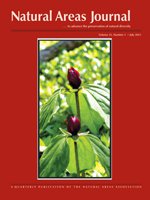We compared three existing ecoregional classification schemes (Bailey, Omernik, and World Wildlife Fund) with two derived schemes (Omernik Revised and Climate Zones) to explore their effectiveness in explaining species distributions and to better understand natural resource geography in the Klamath Region, USA. We analyzed presence/absence data derived from digital distribution maps for trees, amphibians, large mammals, small mammals, migrant birds, and resident birds using three statistical analyses of classification accuracy (Analysis of Similarity, Canonical Analysis of Principal Coordinates, and Classification Strength). The classifications were roughly comparable in classification accuracy, with Omernik Revised showing the best overall performance. Trees showed the strongest fidelity to the classifications, and large mammals showed the weakest fidelity. We discuss the implications for regional biogeography and describe how intermediate resolution ecoregional classifications may be appropriate for use as natural areas management domains.
How to translate text using browser tools
14 July 2015
Comparing Ecoregional Classifications for Natural Areas Management in the Klamath Region, USA
Daniel A. Sarr,
Andrew Duff,
Eric C. Dinger,
Sarah L. Shafer,
Michael Wing,
Nathaniel E. Seavy,
John D. Alexander
ACCESS THE FULL ARTICLE

Natural Areas Journal
Vol. 35 • No. 3
July 2015
Vol. 35 • No. 3
July 2015
Bailey ecoregions
Klamath Region
management domains
Omernik ecoregions
World Wildlife Fund ecoregions




